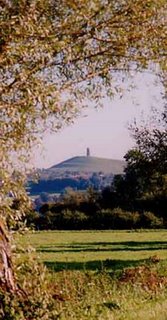 The Wenlock family took a tour of Somerset yesterday, in pursuit of ideas for the sequel to Lord Alexander's Cipher; or, the Bridekirk Behemoth. Our first stop was at Glastonbury, where we climbed the Tor. Conditions were far from ideal; the tower loomed out of low clouds; it was real Marion Zimmer Bradley weather.
The Wenlock family took a tour of Somerset yesterday, in pursuit of ideas for the sequel to Lord Alexander's Cipher; or, the Bridekirk Behemoth. Our first stop was at Glastonbury, where we climbed the Tor. Conditions were far from ideal; the tower loomed out of low clouds; it was real Marion Zimmer Bradley weather.So what has this to do with the novel that, for quite a while, has carried the working title of Lady Cardington's Folly; or, the Limehouse Leviathan? My original idea was to have the story involve the Nautilus, or something like it. Unfortunately I was beaten to it by James McGee's Ratcatcher. But I now have a new idea, which features a somewhat deluded nobleman, the Earl of Avalon, who is incensed by Walter Scott's relocation of Arthurian legend to Scotland in The Lady of the Lake. The true Lake, he believes, is on his own estate.
 A lake that looks something like our second destination, Stourhead. The Earl of Avalon's great house, with landscaped gardens, eyecatchers, follies, etc, is not, of course, going to be Stourhead itself, but is certainly inspired by it.
A lake that looks something like our second destination, Stourhead. The Earl of Avalon's great house, with landscaped gardens, eyecatchers, follies, etc, is not, of course, going to be Stourhead itself, but is certainly inspired by it.By the afternoon the mists and clouds had dispersed, and after touring the house, with its wonderful Regency library (a little too much of the rest of the house was restored to Edwardian grandeur following a bad fire in 1902), we walked around the lake, stopping off at the Grotto, the Temple of Apollo, the Gothic Cottage and the Pantheon.
My story is to be set in 1814, immediately after the defeat of Napoleon. The Earl invites our heroine, Miss Laeticia Leintwardine, to play the part of the Queen of Beauty (a part for which she is eminently qualified) in a great Arthurian pageant. Of course such an event attracts the interests of others, and neither the Earl's plans, nor the course of true love, will run entirely smooth.
There will be buckles swashed, and derring done, but also hearts lost and hearts won. How it all works out in the end I will only know when I have written it, but I hope that I will have some idea after my writing week in deepest darkest Wales at the end of May.

4 comments:
I love the sound of this book. When they get round to making the movie, they can film it at Stourhead.
I like it already.
Does the Earl of Avalon have Excalibur in his keeping?
Finger trouble: 1815! Napoleon had a bit of a setback in 1814, but unless this is going to be part of the story (in which case, fair enough: and an interesting counterpoint to the ladies and gentlemen playing at Arthurian romance), he wasn't defeated: just exiled.
I particularly like the idea of somebody who is anti-Walter Scott because he owns the location of the Arthurian legends. (BTW: "Arthur and the Lost Kingdoms" makes a convincing 21st Century case for Scotland as the site of the battles.)
Perhaps the earl's son and heir (Viscount Tintagel?) could be a playmate of some of the Young England group.
No, it was 1814 that I meant.
Napoleon had been defeated and exiled to Elba in accordance with the Treaty of Paris. It was party time in London.
The Prince Regent put on a gala for the Allied Sovereigns, and the whole country fell in love with the Tsar of Russia.
The Royal Parks were thrown open to the populace. Drinking and gaming booths were set up in Hyde Park. A mock naval battle was fought on the Serpentine. The Temple of Discord in Green Park exploded intentionally, while the Chinese Pagoda in St James's Park did so accidentally.
Alfred, Lord Tennyson, was 5 years old.
Post a Comment